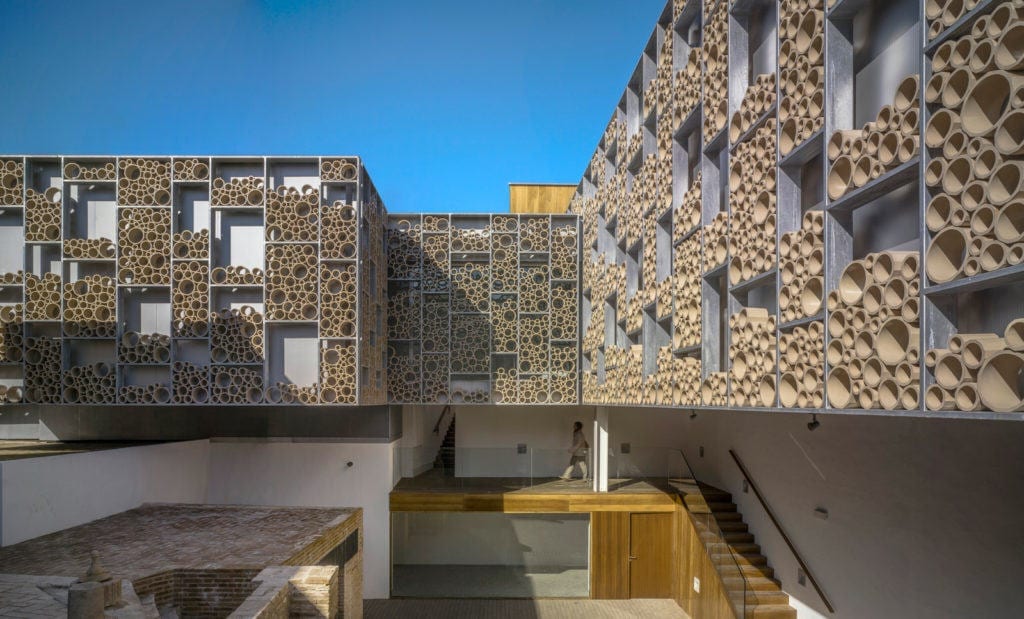This project is the result of a historical process where colonization of the interior space is not based on the form but on meeting the needs that have emerged through time: manufacturing, expanding, hosting, storing, upgrading, etc. The project is conceived as a process that adds value to this coexistence.
The new spaces adapt their height to existing buildings, not exceeding the level of the first floor, looking out from behind, slightly, toward Antillano Campos’ Street, above the lower height manufacturing part. The project is not intended as a visual reference in the outer urban landscape that alters the profile of Triana. The Ceramic Centre will be like a gift, which we will discover only when we go into it.
The building is organized as a continuous path between the furnaces of the project. Access is through the street corner San Jorge with Callao street. The public space sneaks into the building, the first furnace will now be seen from the street, insinuating the entrance. On the upper floor, suspended like a tape that folds surrounding the building, the new exhibition area is offered as a mold in the space left to the medians. The withdrawal is adapted to the specific geometry of each set of furnaces, to change visual relationships between their singular covers.
The ceramic lattice the interior walls of the first floor are built with reinforces the concept of the accumulation process with which the project is built. A galvanized steel substructure as a large shelf provides support for the seemingly random stacking of simple hollow pieces of glazed terracotta that come in four different sizes. This action allows sun protection, depending on the orientation; and also causes different looks to the potter set, defining the image of a new architecture inspired in the material that built the place: Ceramics.
Ceramic piece. The hollow dodecagonal shaped part on the outside and circular on the inside comes in 4 diameter variations (10, 15, 20 and 30 cm) and a depth of 20 cm which allows protection from direct sunlight. The material is fired clay with an ocher-orange glazed hue (No. 8: 3% green, 1% of ocher, 48% white matte, 48% bright white) inspired by the warm tones of ceramics.

